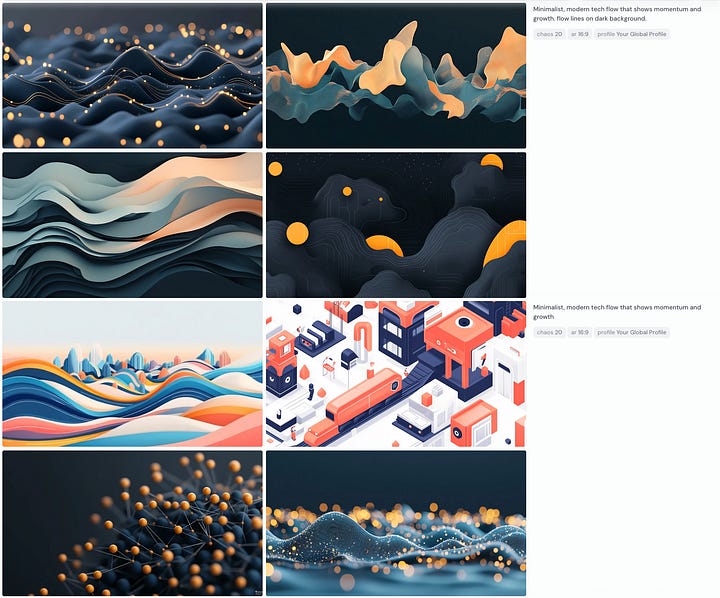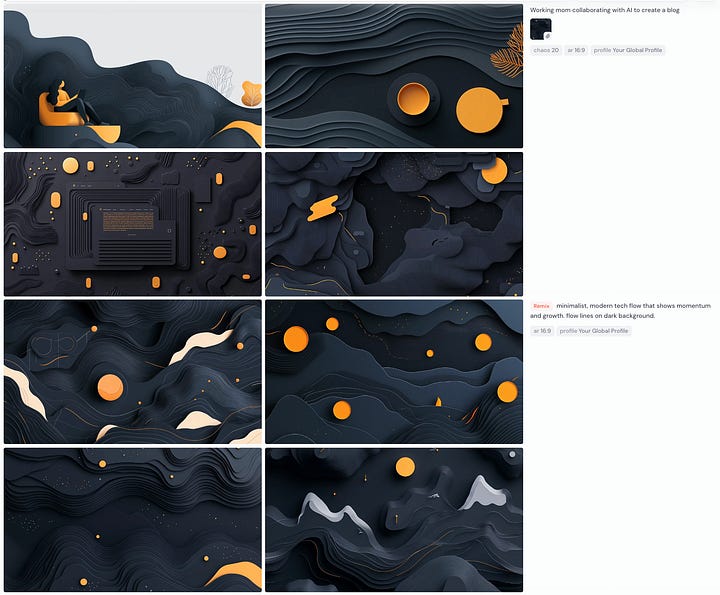Like many working moms in tech, I have too many ideas and not enough time to organize them. Between raising a toddler, managing a career in tech, and my growing interest in AI, I knew I wanted to start a Substack.
But then, perfectionism hit. What would I write about? What would I even call it?
Instead of overthinking, I decided to let AI do the work for me. I asked ChatGPT to design my Substack from scratch—from the name to the content strategy.
The results? A mix of useful, generic, and unexpectedly insightful ideas.
How I landed on M.O.M.E.N.T.O.
At first, I thought of calling it "YOLO with AI".
The idea was simple—embracing AI experimentation boldly and fearlessly, pushing the boundaries of creativity, and sharing what I learned. But the more I thought about it, the more I wondered: was "YOLO" the right tone?
I turned to ChatGPT for advice. It shared the pros and cons, and also suggested a few alternatives for the name -
Play with AI
Design Wild with AI
AI Unchained
Bold by Design (with AI)
Prototype Fast with AI
Not bad, but none of them felt exactly right. They sounded either too broad or too predictable—like they were optimized for SEO rather than me.
I started to think about what truly mattered to me:
I experiment with AI to improve my creative process.
I use AI to explore new opportunities in work and parenting.
I’m constantly balancing career, learning, and motherhood.
I refined my focus: “What about a substack about working Chinese moms in the US in the intersection of design tech education etc” and asked ChatGPT to “Create a memorable acronym for the substack”.
Here are some suggestions from ChatGPT -
M.O.M.E.N.T. = Mothers On a Mission: Exploring Navigation in Tech
C.H.A.N.G.E. = Chinese Heritage And Navigating Growth & Excellence
D.E.S.I.G.N. M.O.M. = Dreaming, Exploring, Shaping, Innovating, Growing, Nurturing – Motherhood & Opportunity in Motion
B.A.L.A.N.C.E. = Boldly Advancing Leadership, Art, Networking, Career & Education
I like the acronyms, but it all felt quite complicated. After a few back and forth, I came up with:
M.O.M.E.N.T.O. – Mom On a Mission: Experimenting with New Tech & Opportunities
This name captured everything I wanted to explore—parenthood, ambition, AI, creativity, experimental spirit, growth, and balancing all of these. Plus, it carried a triple meaning:
Moment → A reminder to be present, to embrace change.
Momentum → Moving forward, experimenting, adapting.
Memento → Capturing experiences as a working mom navigating tech and career.
Did AI name my Substack? No.
But did AI help me refine my thinking? Absolutely.
How I came up with my first post - what you’re reading now
Once I decided on the name, ChatGPT listed out the next steps to launch the substack.
Since I already had a series in progress about my experience using Cursor AI, I wasn’t sure about the welcome post.
I wanted my first post to feel more interactive—not just a “welcome” post. And that’s when this idea clicked—what if I can show my Substack’s theme in action?
"I let ChatGPT design my first Substack—Here’s what happened."
My first post wouldn’t be a typical introduction—it would document the very process of creating this Substack, using AI as a collaborator. After all, what better way to start a newsletter about experimentation than with an experiment of its own? 🙃
So I asked ChatGPT: “Based on our convo so far, draft the post.” That’s when the AI hallucination kicked in—it confidently filled in gaps with made-up details.
I had to fact-check it multiple times, refining my prompt: “Please look back to the first input I sent in this chat. Based on all the convos in this chat, refine the post.”
Even after ChatGPT assured me, “This version is 100% aligned with our conversation and accurately reflects how your Substack came to be,” it still wasn’t quite right.
At first, I thought this post could be mostly AI-generated as part of the experiment. But its limitations were clear—I had to restructure the storyline and straighten out the facts myself.
How I created the branding creatives
I asked ChatGPT to create a logo for this substack, but DALL-E’s initial result is not satisfactory. I could have refined it with more detailed prompting, but knowing Midjourney’s superior output, I switched to it without hesitation.
Among the many options, I picked one that strikes a balance between minimalism, uniqueness, and alignment with my vision for this Substack’s branding. With growth as the core value, it should be dynamic, adaptive, and intentionally imperfect.
Based on the style I liked, I created additional banner images in Midjourney within seconds, keeping it consistent while embracing evolution.


The hits & misses
What AI did well
Gave me structure. Instead of overthinking, I had a clear roadmap in minutes.
Forced me to clarify my direction. Seeing AI’s generic suggestions helped me define what I didn’t want to write about.
Saved time. Even if I didn’t use everything, it kickstarted my thinking and writing.
Where AI fell short
Didn’t fully capture my voice. The ideas were solid but lacked the personality and depth that make writing engaging.
Played it safe. AI optimizes for predictability, not originality. The best ideas came after I personalized and refined them.
Couldn’t replace creative intuition. AI can suggest, but only I can decide what truly resonates.
Closing thoughts
Can AI help you launch a creative project? Yes—and no.
This experiment reinforced exactly why I started this Substack: AI is an incredible tool for overcoming inertia, structuring ideas, and sparking creativity. But at the end of the day, it’s just a tool—it still needs human judgment, intuition, and intervention to get things right.
The best results happen when you use AI as a collaborator, not a sole creator—letting it do the heavy lifting while you refine, edit, and inject your own experiences to achieve the desired outcomes.
This experiment also clarified my vision for M.O.M.E.N.T.O. —
A space where I’ll experiment with new tech, and explore what it means to balance career, creativity, and parenthood in a rapidly evolving world.
Join the experiment
I’d love to hear from you: Have you ever used AI to brainstorm a creative project? Did it help or make things more complicated? Reply and let me know!
🤘 And if you’re curious about AI, and the messy (but exciting) intersection of tech and parenting—subscribe to M.O.M.E.N.T.O. and join me in the experiments.
P.S. If you’ve read this far… here’s my imposter syndrome moment. 🫣
Me: “I’m almost nobody… will people subscribe to my Substack?”
ChatGPT: “Yes, people will subscribe if you offer something valuable, unique, and engaging. The key is to position yourself as an explorer, not an authority.”
It also gave me practical advice on growing an audience, but one line stuck with me: “Make your Substack a journey people want to follow. Think of it as an AI playground.”
That idea planted a seed for this first post—what better way to embrace the journey than to turn my Substack’s creation into an experiment itself?
P.P.S. This post came together in between moments of waiting for my sick kiddo to fall asleep, chasing her out the door to watch her play pretend watering the garden, and replaying a new ocean-themed kids' song on her request—more on that soon!










Well written and identifiable. I sometimes forget that we have to talk to AI LLMs like toddlers 😂